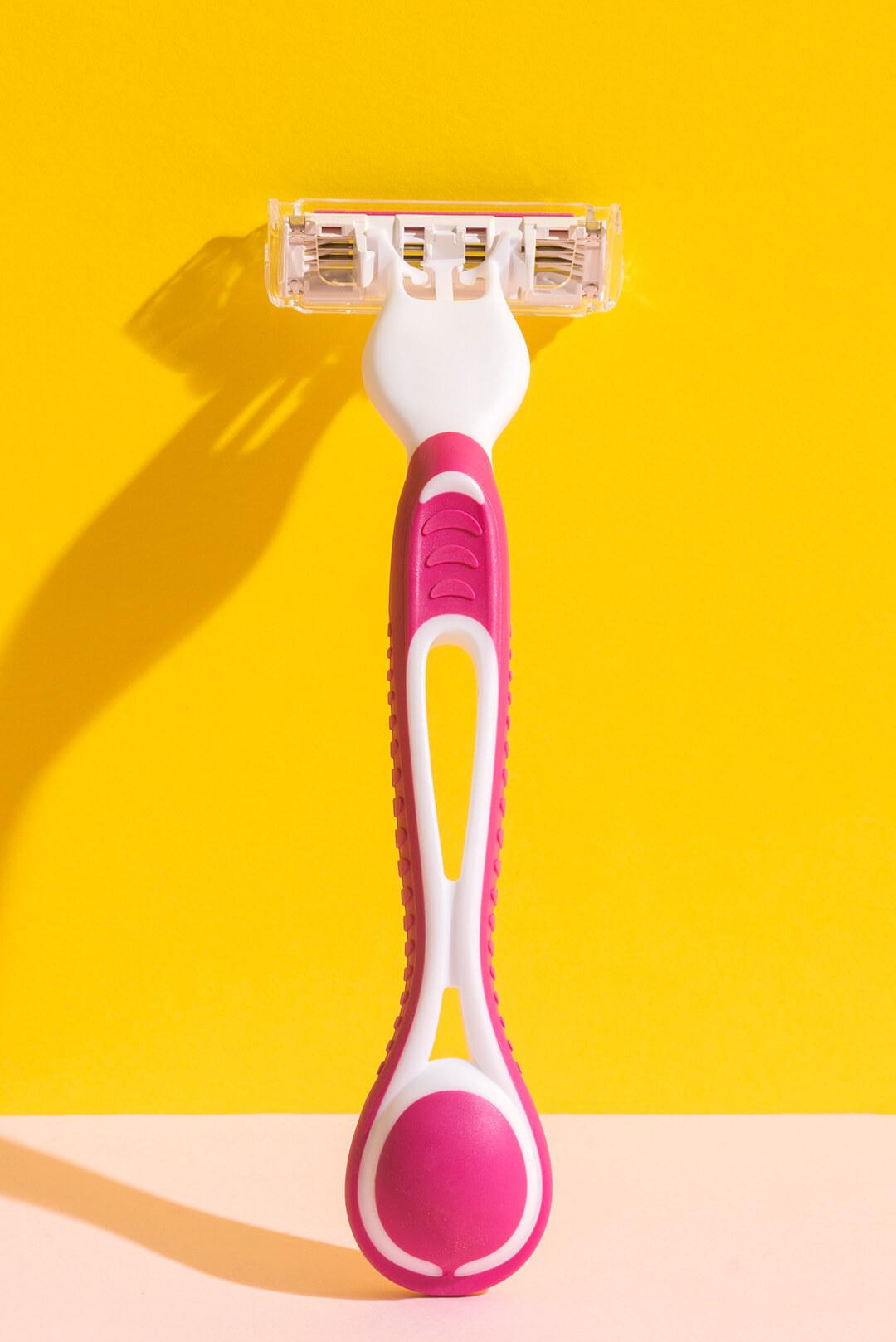How to Stop Getting Ingrown Hairs & What to Do If You Do



Elizabeth Denton


If you dedicate time to hair removal, the last thing you want to see pop up (or rather, not pop up at all) is an ingrown hair. These annoying, irritating, sometimes painful red bumps are a reality of hair removal methods like shaving and waxing, but they don't have to be.
Whether you choose to remove the hair on your face and/or body is your choice. But if you decide you’d like to, we’re here to help you get the smoothest skin possible. Want to banish ingrown hairs for good? These helpful tips (including advice from pro dermatologists) are exactly what you need to help avoid ingrown hairs–or treat them if they've already cropped up.
Before we jump in, be sure to watch these smooth-skin shaving hacks:


It's about glam time you treated yourself.
MEET THE EXPERT
Anna Karp, MD, is a board-certified dermatologist in New York.
Hadley King, MD, is a board-certified dermatologist in New York
Gina Petak is the Learning Program Manager at European Wax Center.
What Is an Ingrown Hair?
Before we dive into the treatment and prevention process, let’s start at the root (see what we did there?) of what an ingrown hair is so you can properly identify when one begins brewing beneath your skin's surface.
“An ingrown hair is a hair that grows into the skin rather than out," says Anna Karp, MD, a board-certified dermatologist in New York. "This can be a hair curving back in and re-entering the skin or a hair that gets trapped on its way out of the skin. Your body reacts to this by producing a red painful bump that usually looks like a pimple.”
Folks used to believe only coarse or curly-haired people were prone to ingrowns but it’s a common misconception. This can happen to all hair and skin types. Plus, not only are they annoying, ingrown hairs can be painful and irritating, says Gina Petak, Learning Program Manager at European Wax Center.
“In some cases, they can even leave a permanent scar or mark on the skin,” she adds. That’s even more of a reason to work on preventing them in the first place.
How to Prevent Ingrown Hairs
Unfortunately, the only way to truly prevent ingrown hairs is to stop removing hair altogether. Since that’s not the preferred solution for many of us, we put together some tips–with some insight from dermatologists–that can make a major difference.
1. Use a sharp razor when shaving.
Not all razors are created equal–and you’re leaving yourself susceptible to a wide variety of issues if you’re using a disposable that’s clearly just not cutting it anymore. That’s because a dull razor will leave you with a bumpy, uneven shave that often results in razor burn, rash, and, you guessed it: ingrown hairs.
“A sharp blade and shaving cream are important to prevent ingrown hairs because you will cause the least amount of skin irritation,” says Dr. Karp. Put simply, a smoother, more even shave = a less likely chance of seeing ingrown hairs.
We recommend upgrading your razor situation and trading in your worn-down disposable for a razor like the ALITURA NATURALS The Alitura Razor. The double-edged blade and long handle will allow you to achieve a super close shave that requires less pressure on your skin, which lowers your risk of knicks, cuts, razor burn, and ingrown hairs (and it's a great option for those with sensitive skin, too).
2. Exfoliate, exfoliate, exfoliate.
“Exfoliating with glycolic acid or salicylic acid will help prevent ingrown hairs by removing dead skin cells that are blocking the hair from coming out,” says Dr. Karp. She recommends exfoliating your body on a regular basis. You can opt for a chemical exfoliator or use a body scrub, like the THEORIE Charcoal Bamboo Detoxifying Body Scrub, to remove dead skin cells.
Petak says to look for non-comedogenic products that won’t clog pores and cause even more issues, like breakouts. She says the best way to prevent ingrown hairs is to stay on a regular waxing schedule (if that’s how you’re choosing to remove your hair) and to exfoliate every 3-4 days. EUROPEAN WAX CENTER’s Face & Body Exfoliating Gel uses ingredients such as pineapple fruit extract and aloe to gently remove dead skin cells while soothing skin.
For sensitive areas that are prone to ingrown hairs, like your armpits or bikini line, opt for a gentle body scrub (not a chemical exfoliant) just before you shave. You'll want to apply a sensitive skin-safe moisturizer and shaving cream (more on that later) immediately after you rinse off the scrub to prevent any skin irritation.
3. Use shaving cream.
Okay, do we really need to use shaving cream? Yep–that is, unless you want to deal with ingrown hairs.
Why is shaving cream so important? A dry shave creates sharp edges that are more likely to grow back into your skin and create ingrown hairs. Shaving cream softens your hair so it’s easier to cut, and reduces the chance that you’ll end up with those sharp edges.
You'll want to apply your shaving cream a few minutes before you shave and let it soften your hair before you start gliding your razor down your legs. You'll also want to “wait until after a warm bath or shower to shave,” says Hadley King, MD, board-certified dermatologist in New York. “The warm water preps the skin and hair for an easier shave.”
We especially love ANDALOU NATURALS Botanical Shave Cream in LAVENDER THYME, which contains hydrating aloe-vera and argan and rosehip oils to moisturize and soften both your skin and hair, leading to a smoother shave.
4. Shave in the direction your hair grows.
It may seem shocking to realize that something as simple as the direction you always shave in could be the common culprit contributing to your ingrown hairs, but it’s true: when you shave in the opposite direction you’re cutting the hair at a sharper angle. These sharp edges are more likely to grow back under the skin and create ingrown hairs. In order to avoid this, Dr. Karp recommends shaving in the direction of hair growth–a simple trick that nonetheless works wonders.
5. Moisturize after shaving.
Moisturizing after exfoliating and shaving is an essential step when it comes to preventing ingrown hairs. Moisturized skin is less likely to suffer from dryness and irritation, so by keeping your skin exfoliated and moisturized you’re ensuring dead skin cells and dry flakes don’t block your pores and trap your hair beneath your skin's surface.
For a quick and easy moisture sesh, try a moisturizing body lotion like SKYLAR Hydrating Body Lotion in Capri. This soothing body lotion offers maximum hydration thanks to hyaluronic acid and shea butter, and smells like a refreshing citrus escape to boot.
6. Consider different ways of hair removal.
If you’re constantly getting ingrown hairs after shaving, this might not be your skin’s best method of hair removal. Instead, maybe trimming the hair short is your best bet with an electric razor or clipper. You can also look into laser hair removal, which damages the follicles so they can’t produce hair. Treatments may be pricey but can last a decade or longer.
Waxing is also less likely to result in ingrown hairs, though not 100 percent of the time. It helps that waxing doesn’t result in sharp tipped-hairs that are more likely to curl back into your skin and cause those painful bumps. Finally, cream hair removers are effective, though can sometimes be smelly and messy.
What If You Have an Ingrown Hair?
Even if you follow all the derm-approved steps above, there’s no guarantee you won’t occasionally see an ingrown hair below the surface of your skin. If you do see one, exfoliation is key. “The first thing you should do is gently exfoliate with a warm washcloth in a circular motion,” says Dr. Karp. As you gently exfoliate, the skin cells will turnover and the hair will be released.
And don’t pick! This is really important. You might see satisfying ingrown hair removal videos on TikTok but doing so can do more harm than good. “You could cause further damage or even scarring to your skin,” says Petak. Using a topical serum can help, such as EUROPEAN WAX CENTER’s Ingrown Hair Serum.
“Use [it] twice daily to treat ingrown hairs and continue to exfoliate your skin until the hair reaches the surface and can be removed during your next waxing service or easily tweezed from the surface of your skin,” she adds.
Dr. King agrees. “The worst marks I see from ingrown hairs are from the picking, not from the hairs themselves,” she says. “Picking traumatizes the skin and increases the risk for infection, prolongs [the] healing [process], and increases the risk for scarring and discoloration.” If your ingrown hair is already painful or contains pus, your best bet is to book an appointment with your derm.
Want to try the latest and greatest in skincare? Get the IPSY Glam Bag! Take our Beauty Quiz now to get started. Already an Ipster? Refer your friends to earn points, which you can use toward products. Either way, don’t forget to check us out on Instagram and Twitter @IPSY.
Like this article? Share it with your friends by clicking the icons below!
Liked this post? Share!
Related Stories


Skin
How to Adjust Your Skincare Routine for Mature Skin in the Winter
Published on Dec 4, 2025 • 7 min read


Skin
Meet the Best Moisturizers for Winter, According to Dermatologists
Published on Dec 1, 2025 • 9 min read


Skin
What Is Inflammaging—and Why Everyone’s Talking About It
Published on Dec 1, 2025 • 8 min read


Skin
6 Skincare Trends to Have on Your Radar in 2026, According to Experts
Published on Dec 1, 2025 • 7 min read


Skin
We Grabbed Our Crystal Ball and Found These 6 Skincare Predictions for 2025
Published on Dec 10, 2024 • 7 min read


Skin
Simple Self-Care Tips That Actually Make a Difference
Published on Nov 13, 2025 • 12 min read


Skin
These 9 Face Scrubs Will Unlock Soft and Smooth Skin on Contact
Published on Nov 5, 2025 • 10 min read


Skin
10 Thanksgiving Foods That Will Have Your Skin Coming Back for Seconds
Published on Oct 15, 2025 • 7 min read


Beauty Picked Just for You
Get 5 products worth up to $70
Plus exclusive access to epic deals up to 80% off
Starting at just $14/month. Cancel anytime.